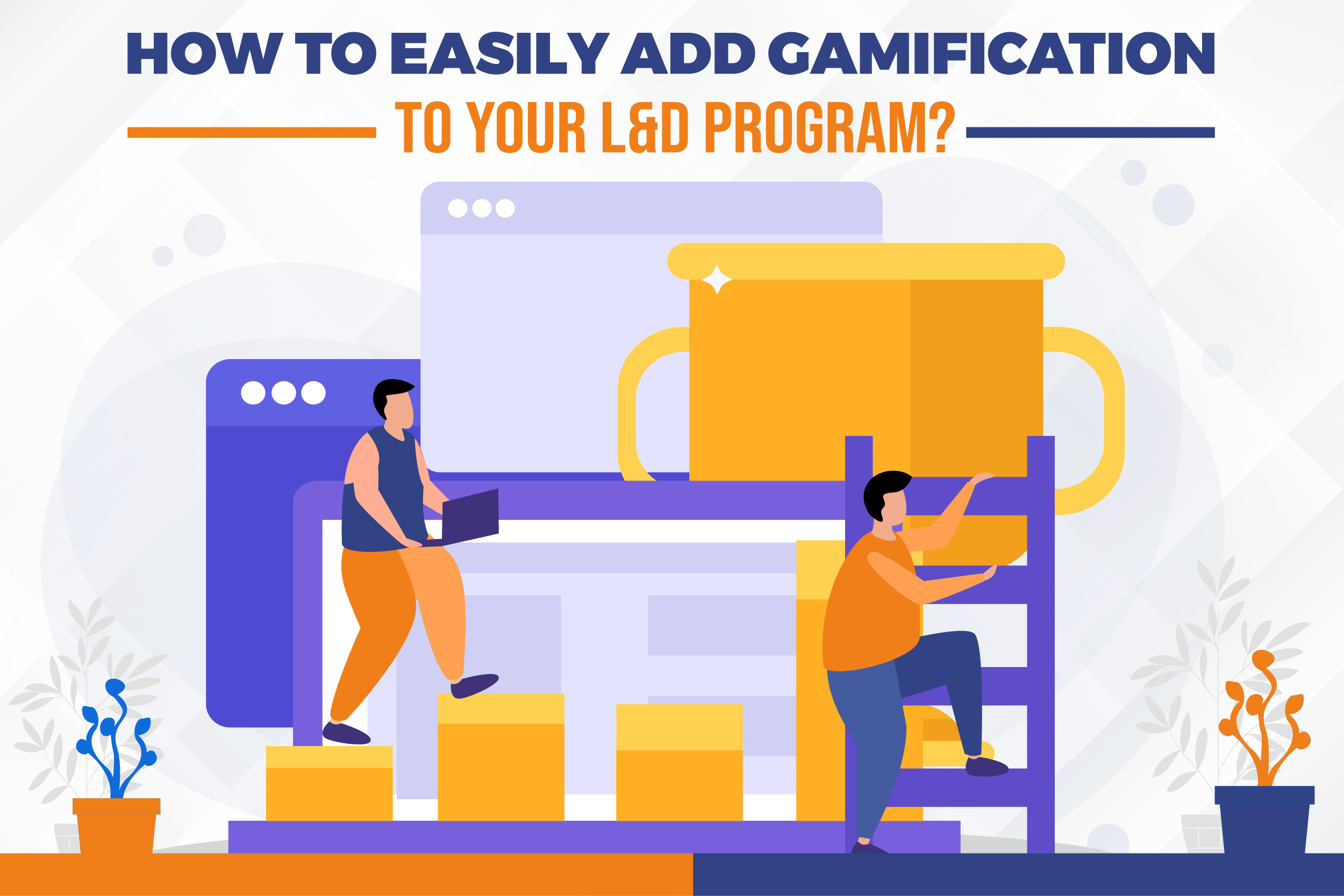
How To Easily Add Gamification To Your L&D Program?
Even the finest learning techniques are destined to fail if it lacks learner engagement. For L&D teams throughout the world, one of the major issues is learner engagement in corporate training. In today's society, which is characterized by intense multitasking and growing distractions, learners anticipate increased stimulation, feedback, and incentives, and traditional models of engagement appear to no longer be effective.
An increasing number of businesses are incorporating gamification as a solution to the problems brought on by shifting learner demographics and technology as well as adapting to an environment that is becoming increasingly competitive.
While "games" in corporate training or Leadership Training may appear to be a misfit, they are actually the only format that allows for genuine interaction among learners. Professionals in learning and development (L&D) who have already begun to "gamify" their L&D programs have already had considerable success. Additionally, even when working remotely, gamification may be a fantastic community-based learning tool for encouraging collaboration inside and between teams.
The following are the best methods to include gamification in your learning and development or Leadership Programs:
4 Player Types L&D Experts Can Use
There are four main categories of video game players, as per Richard Bartle's taxonomy of player types:
"Competitors" –
These player types emphasize success, ranking, and direct peer competition. Ranks and leaderboards keep their attention. The sales organization often has the biggest percentage of "competitors" in the scope of L&D.
"Achievers" –
Concentrate on earning status and completing tasks in a timely manner. A celebration of their accomplishments captivates their interest. The individuals in your organization who exhibit above-average enthusiasm for advancement are known as achievers.
"Explorers" –
Concentrate on exploration and have a desire to learn new things. Finding undiscovered treasures or less evident accomplishments keeps them interested. People in your organization that are explorers often desire to learn about topics that aren't directly relevant to their everyday work.
"Socialites"-
Concentrate on creating a network of connections and acquaintances. Newsfeeds, group activities, and peer-to-peer interactions keep them interested. Socialites gain by participating in a joint educational endeavor with their colleagues.
It is quite challenging to design a single learning experience that would inspire all four categories of "players," and it's not always the ideal strategy to develop a comprehensive L&D program. L&D professionals should think about generating varied activities to inspire the many learners in their business, as game developers build different games to engage different players.
For instance, you may organize a contest to inspire your "competitor" attendees one month and a group study activity to inspire your "socialites" the following month. To encourage your "achievers," you may make use of features on your online learning platforms like awards and certificates. Or, for your "explorers," you may make a collection of more than 13,000 courses available for them to browse whenever they want. This can be applied in several Leadership Programs as well.
How To Begin Gamification In Learning And Development
The secret to incorporating gamification into your learning and development program is to start with only one or two categories of "players" and expand from there. Addressing both the "competitor" and "achiever" players in your business by holding a learning competition is a simple approach to getting started with gamification. A learning competition is a good approach to engage these personalities since most leading companies hire intelligent and motivated individuals.
One Popular Example
When MediaKind, an Ericsson spinoff with 1,200 employees that operates in 29 countries, executed a learning competition, they introduced and provided a range of topics that their employees were interested in, from mental wellness to diversity and inclusion to technical skills, and they started the campaign with an email from the CEO.
According to Laura Simzer, MediaKind's VP of Global Talent, "Learning suddenly surged when CEO issued the email. She added, "We got a lot of great comments. Emails simply won't stop flooding in. The magic was very amazing." By providing a wide range of courses, Mediakind engaged its students and sparked their desire to acquire new talents and compete.
Ending Lines
It takes a lot of effort to create an interesting skills development program or intriguing Leadership Courses for that training program, but the payoff is great. One tool you may utilize to support a fun skill-building plan is gamification. After all, all firms face the problem of inspiring and involving their staff in training. By incorporating game features into non-game contexts to design engaging, motivating learning experiences, gamification can address these issues. This helps firms stay competitive, provide superior business outcomes, and generate a good return on investment (ROI) in addition to driving significant learner engagement among young learners.
